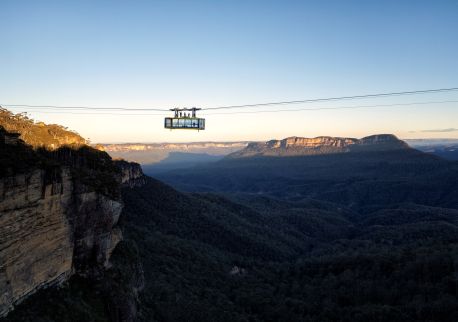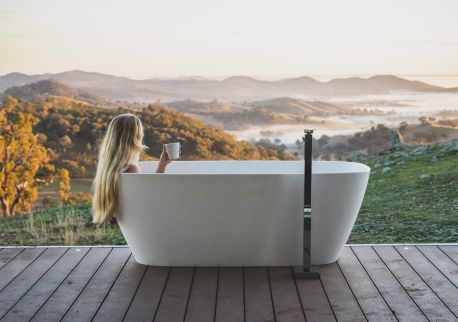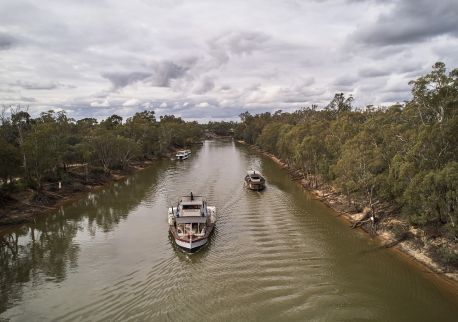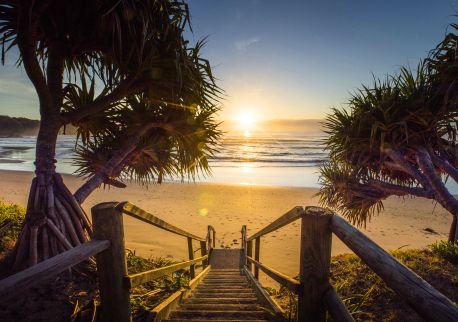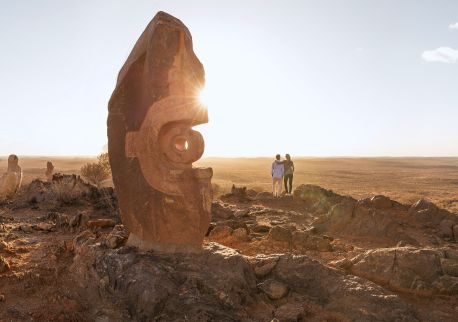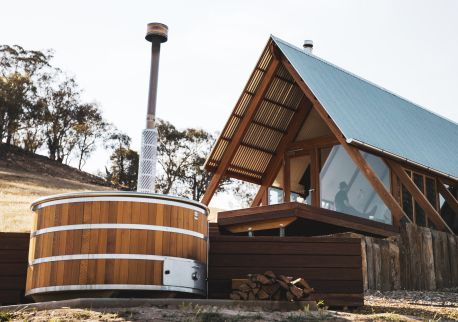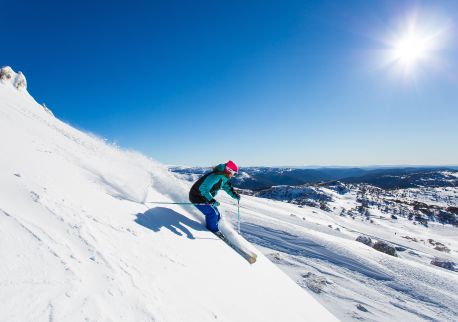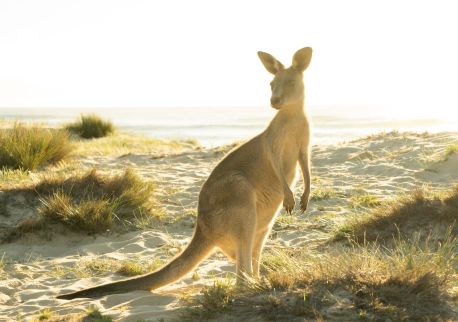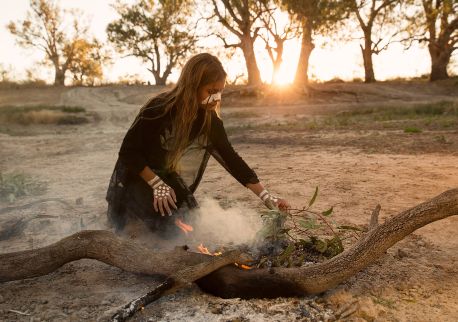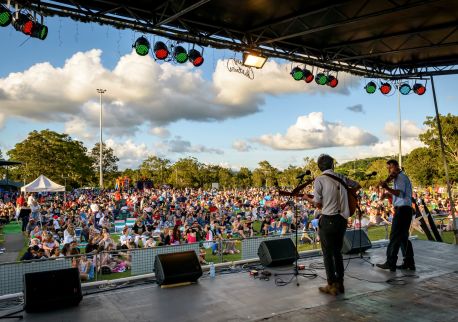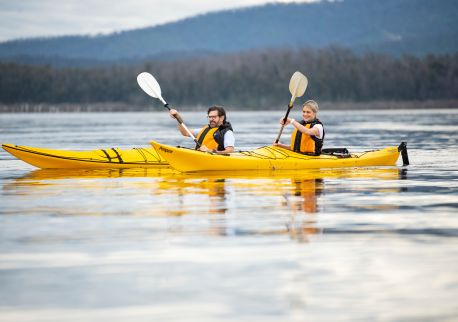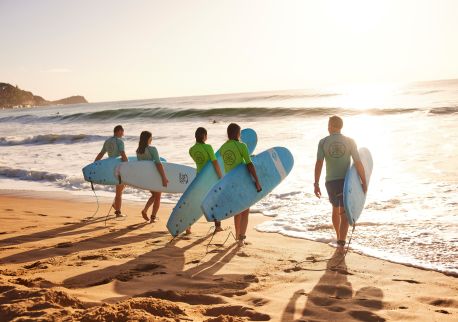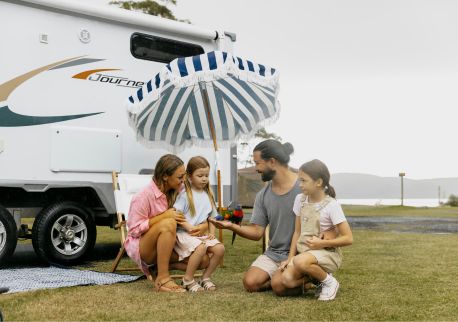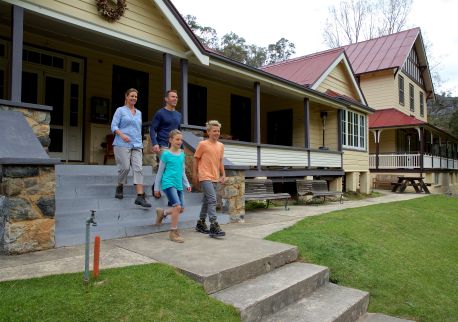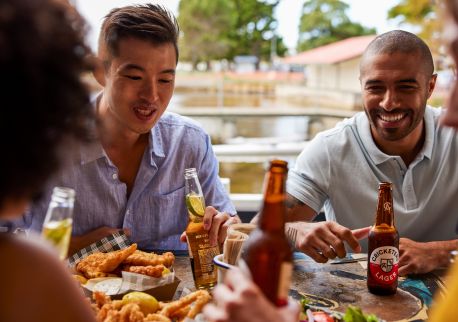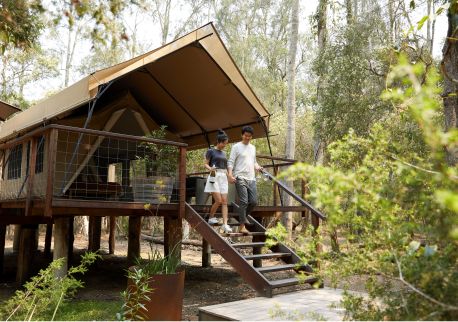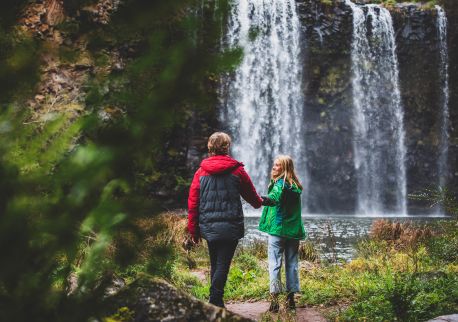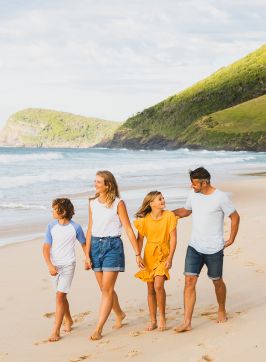With a rich heritage dating back tens of thousands of years, Aboriginal culture is intricately woven into the lands of NSW. Be immersed in the world’s oldest living culture at these captivating Aboriginal sites.

Destination NSW
- 4 min read
Sandstone Caves, Pilliga National Park
Walk in the footsteps of the Gamilaroi people through the Pilliga National Park, north of Dubbo. The Traditional Owners of the land have lived here for thousands of years, imparting a remarkable collection of rock art and engravings on the region’s sandstone walls. You can see them on the self-guided Sandstone Caves walking track or learn more about this ancient legacy on a guided tour with an Aboriginal Discovery Ranger.

Sandstone Caves walking track - Credit: John Spencer | DCCEEW
Mutawintji National Park
The remote Mutawintji National Park, the lands of the Wanuwakul, Malyanuppa, Bungaguli, Wilyakali and Barkandji people, is two-and-a-half hours’ drive northeast of Broken Hill. The red earth land is famous for being home to one of the best collections of rock art in the state. Standing in front of these perfectly preserved paintings and carvings, it’s hard to believe that they were created thousands of years ago. Some rock art sites, like Wright’s Cave, are accessible to all, but to visit the restricted Mutawintji Historic Site you’ll need to book a guided tour with Mutawintji Heritage Tours. While you’re in the area, look out for yellow-footed rock wallabies – the national park houses one of few populations of the cute marsupials.
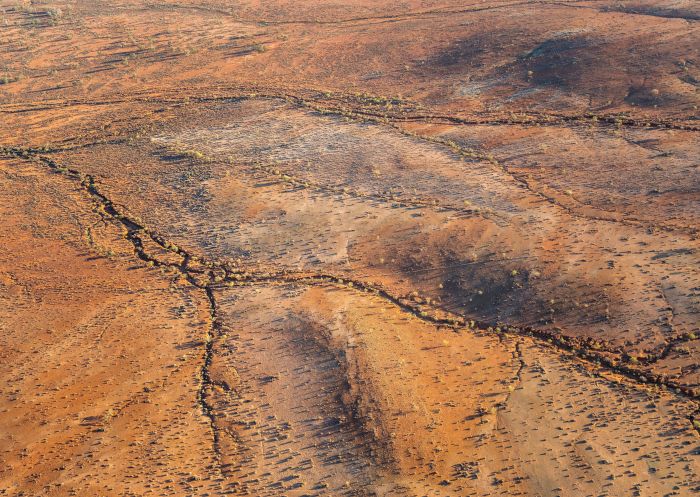
Mutawintji National Park - Credit: John Spencer | DCCEEW
Mungo National Park
You’d be forgiven for thinking you’d been transported to the moon when you visit Mungo National Park, part of the World Heritage-listed Willandra Lakes Region in the far west of NSW on the lands of the Paakantji, Ngyiampaa and Mutthi Mutthi people. As well as a unique, alien landscape, the national park is rich with the oldest of Aboriginal history. Evidence of human life dating back 40,000 years has been discovered here through the remains of Mungo Man and Mungo Lady – the oldest human remains ever found in Australia. Join a tour of the Walls of China, led by a local Aboriginal guide, to learn more about them and how they were able to survive in the harsh environment.

Mungo National Park - Credit: John Spencer | DCCEEW
Bingi Dreaming Track, Eurobodalla
Dreaming Tracks, also known as Song Lines, are pathways across the land, sung to pass on cultural knowledge and navigate ancient routes, linking important places visited by Aboriginal people, like campsites, water and food sources, and ceremonial sites. The Bingi Dreaming Track on the South Coast has been used by the Brinja-Yuin people for generations. Today, the 14-kilometre trail stretches from Congo in the north to Tuross Head in the south, passing by the remnants of shell middens and through lush coastal forest. In winter and spring (the peak seasons), it’s also an excellent place to spot migrating whales.
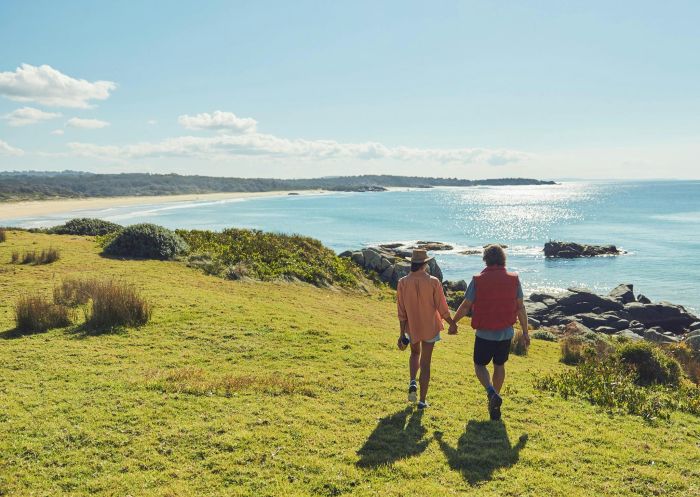
Bingi Dreaming Track, Eurobodalla - Credit: Jason Lerace
Aboriginal Cultural Ways Trail, Ballina
Get a deeper understanding of the Aboriginal people of the Ballina region, a Northern Rivers town on Bundjalung land, with the Aboriginal Cultural Ways Trail. Learn the stories of their language, traditions, historical events and the significance of place, shared by members of the local Aboriginal community who provide an insight into their deep connection with the land. The trail brings together ancient stories and modern technology, with a series of interpretive signboards and interactive QR codes along the route.

Aboriginal Cultural Ways, Ballina - Credit: Ballina Shire Council | Ben Wyeth
Brewarrina Fish Traps (Baiame's Ngunnhu)
Many years ago, the Aboriginal people who lived around Brewarrina in northern NSW set up an elaborate system of rock weirs and pools to catch fish as they swam upstream. The Brewarrina Fish Traps (traditionally called Baiame’s Ngunnhu), on the traditional lands of the Ngemba, Murrawarri, Euahlayi, Weilwan, Ualari and Barranbinya peoples, stretch for more than half a kilometre and can still be clearly identified today. They are considered by some as the oldest handmade constructions in the world. Join a guided tour to learn how they were made and used, then visit the Brewarrina Aboriginal Cultural Museum.
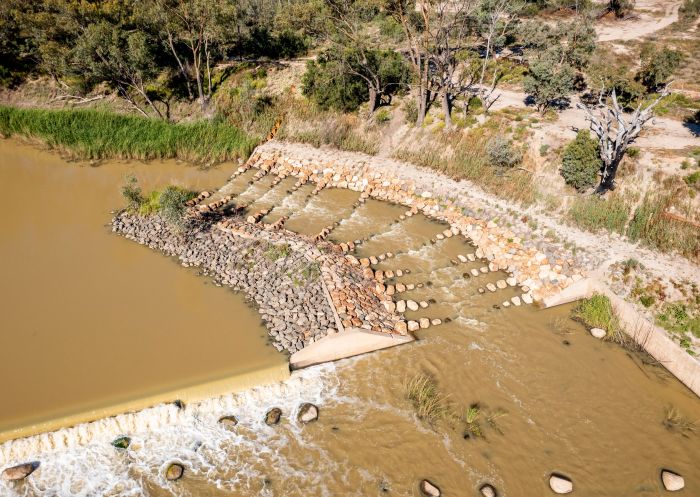
Brewarrina Fish Traps (Baiame's Ngunnhu) - Credit: John Spencer | DCCEEW
Worimi Conservation Lands, Port Stephens
Covering more than 4000 hectares, the Worimi Conservation Lands near Port Stephens protect the unique environment of the Stockton Sand Dunes, some of the biggest sand dunes in the Southern Hemisphere. It’s a place of both natural wonders and great cultural significance to Worimi people. Explore the dunes through an adrenaline-fuelled, but educational, quad bike tour with Sand Dune Adventures and their Aboriginal guides.

Sand Dune Adventures, Port Stephens
Bundian Way Story Trail, Eden
For tens of thousands of years, the Bundian Way offered a safe path between the high country of the Snowy Mountains and the ocean of the Sapphire Coast for local Aboriginal people of the area, Yuin, Ngarigo, Jaitmathang and Bidawal Country. Covering 365 kilometres, it allowed many different groups to meet for important ceremonies. Today, you can follow a short 1.8-kilometre section of the trail to gain an insight into these ancient interactions, guided by interpretive storyboards and backdropped by stunning vistas.

Bundian Way Story Trail, Eden - Credit: Eden Local Aboriginal Lands Council
Sandhill Artefacts, Narrandera
The delicate art of crafting boomerangs has been passed down through countless generations. Wiradjuri man Michael Lyons learned from his father and creates beautiful pieces in his Sandhills Artefacts workshop in The Riverina. Visit to see how he takes raw wood and transforms it into boomerangs, digeridoos, coolamons and other artefacts. He and his family also run tour that take you through the bush and along the Murrumbidgee River to learn about bush medicine, sacred sites and traditional foods.
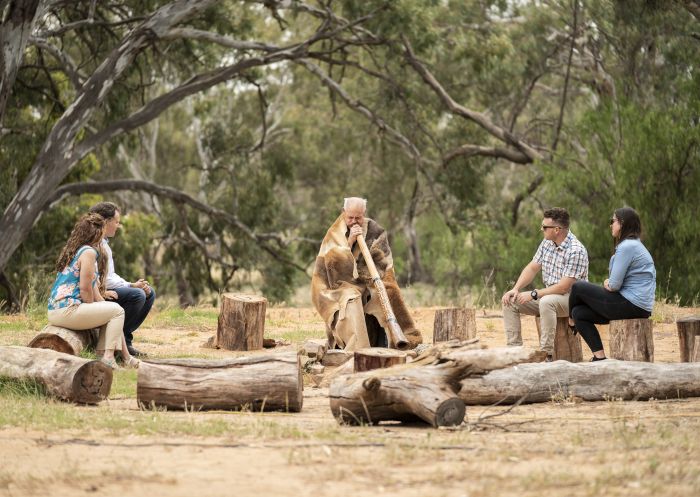
Sandhill Artefacts Cultural Tours, Narrandera - Credit: Narrandera Tourism
Wagirra Trail and Yindyamarra Sculpture Walk, Albury
Running alongside the Murray River, the 15-kilometre Wagirra Trail is a popular track for walking and cycling, and links the Wonga Wetlands and Gateway Island, a nature strip and cultural hub (both the Burraja Indigenous Cultural and Environmental Discovery Centre and the Albury Wodonga Farmers Market can be found here) between Albury and Wodonga on Wiradjuri land. The Yindyamarra Sculpture Walk makes up a 5km stretch of the path and is lined with 15 striking sculptures created by contemporary Aboriginal artists to tell age-old Aboriginal stories. Learn more about the local Wiradjuri language and cultural history of the area with a Giilangyaldhaanygalang (a Wiradjuri women-owned organisation) guided tour around the area.

Wagirra Trail and Yindyamarra Sculpture Walk, Albury Wodonga
Bulgandry Art Site Aboriginal Place, Brisbane Water National Park
Carved into the stone at least 200 years ago (possibly thousands of years ago), the rock engravings of the Bulgandry Art Site, are some of the best-preserved in NSW. You can easily identify wallabies, fish, a dolphin and a man in a large headdress, thought to represent an ancestral hero, for whom the site is named. In Brisbane Water National Park you can also see rock grooves that were used to sharpen stones for tools and weapons.

Bulgandry Art Site Aboriginal Place, Kariong - Credit: John Yurasek | DCCEEW
Ku-ring-gai Chase National Park
Wrapping around the northern fringes of Sydney, the Ku-Ring-Gai Chase National Park (Darramuragal or Darug lands) is a pocket of wildness on the edge of the city. It’s also home to several significant Aboriginal sites that you can explore on your own or as part of a guided tour. The Aboriginal Heritage Walk takes you through lush forest to Red Hands Cave, the most famous rock art site in the park and named for the striking ochre handprints inside. If you’d like more of an insight into Indigenous Aboriginal culture, join Natcha Cultural Tours for an immersive experience that covers customs, language, song, bush foods and much more.

Natcha Cultural Tours, Ku-ring-gai Chase National Park - Credit: Natcha Cultural Tours

